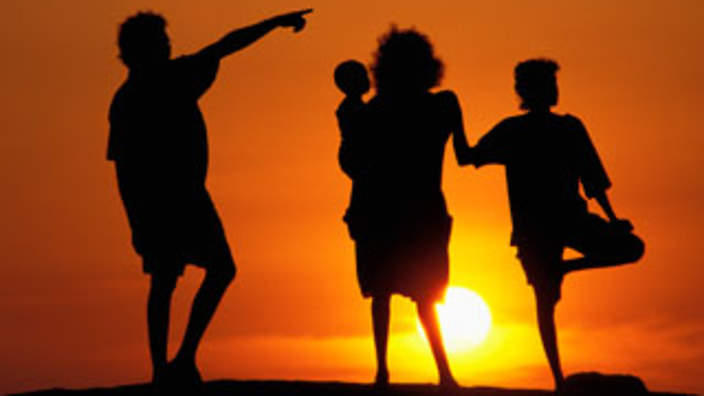Rev. Dr. Djiniyini Gondarra OAM, a senior Yolngu elder, is exhausted by the constant death rates of his people from preventable diseases in Arnhem Land. “All I do these days is attend funerals,” he says. Marcus Ilton, the Director of Cardiology at Royal Darwin Hospital, agrees. He remains deeply concerned by the high morbidity rates in the Northern Territory, particularly from heart failure, heart attacks and rheumatic heart disease. Together with a research team at Why Warriors, they are working to develop culturally appropriate videos and teaching information to help with health literacy around these issues.
The coronavirus pandemic has opened up the need for improved telehealth and digital health resources that will ultimately help Indigenous people living in remote areas. “Regional Australians are 50 percent more susceptible to heart disease” reports the ABC, with one of the reasons for this being their lack of access to healthcare. If we combine that with figures showing the Northern Territory to have “the worst rate of heart disease in Australia, with cases in areas such as Arnhem Land “more than double the national average,” we have the opportunity to act now to bolster heart education resources to help alleviate the crisis.
What is failing?
Communication – especially between remote Indigenous Territorians and people in mainstream healthcare. If English is the second or third language for many Indigenous people, then their understanding of medical concepts such as ‘the body’s need for oxygen’ and ‘circulation’ is not possible. Pamphlets and brochures, 1-1 appointments, preventative solutions and medication dosage material is all well and good, but without the underlying understanding of what heart disease is, from their own cultural standpoint, none of this will be adhered to.
“What does percentage mean?” a Yolngu interpreter asked Richard Trudgen, co-founder of Why Warriors. Richard asked whether she had any pictures in her head when she heard that word.
“None at all,” she admitted.
“How was this word used?” Richard asked her.
“The doctor said ‘2 percent’ and something to do with kidneys.”
“Perhaps he said ‘only 2 percent kidney function’?”
“Yes, that’s it,” she said.
Richard drew a kidney for the Yolngu woman on a piece of paper. Then he drew ten lines down it and ten lines across.
“This is a kidney with 100 boxes over it,” he explained. “What the doctor was talking about was just 2 of these boxes inside the kidney are good and functioning. But the rest is no good.”
Suddenly the woman broke down and started to cry.
“Was this is one of your relatives?” Richard asked gently.
“Yes, my sister.”
“Has she gone already?”
“Yes, she didn’t last long after he told her. I wish I knew what the doctor meant.”
It is difficult for medical professionals to have enough worldview, cultural and linguistic knowledge for many different Aboriginal groups to be able to explain things to them in a clear way. Even Aboriginal health workers employed to bridge the cultural gap have great difficulty unpacking and understanding the language of medical professionals in the mainstream system. Thus resources in people’s own language with back translation in English would act as a communication conduit on both sides. Properly researched and accessible podcasts/ videos could be drawn upon to close the gap between medical professionals and their patients.
During coronavirus the subject of communication costing lives was thrown into the spotlight by poor translations of government messages that left non-English speakers throughout Australia, confused and disempowered. And this is the everyday normality for many Indigenous people in every aspect of their own health.
What can we do?
- Support the production of health videos in the people’s language and worldview with back translation in English. These videos will become a communication conduit that will close the gap in communication between medical professionals and their patients.
- Provide radio programs, podcasts and media in which people have a forum to ask questions and receive answers in their own language from their own cultural viewpoint, by trained cross-cultural professionals.
For example, this coronavirus video series discusses ‘social distancing’ in relation to the goŋ-wukundi law, which is a Yolngu law in which Yolngu people are restricted in what they can do and where they can go, so they can understand similar mainstream government rules during the pandemic. In the same video series, the Yolngu phrase buwayak warrakan mala (‘an invisible group of animals or birds’) is used when referring to live disease agents like bacteria and viruses, so Yolngu people can picture in their minds how coronavirus spreads and reproduces.
Culturally appropriate and effective resources like this are rare, and matching medical terminology to people’s worldview (that is completely different to that of mainstream culture) requires trained cross-cultural professionals with years of experience understanding and working together with Indigenous people. Why Warriors is currently working on a series of heart health videos to explain concepts such as the need ‘for oxygen’ in the body, ‘heart attack’ and ‘blood clots’ effectively.
“Health literacy is a vital aspect of improving people’s understanding of how they can improve their own health outcomes,” states Marcus. Only through such accessible communication will Yolngu people be able to move forward with the information they need to take control of their own health and lives.
Contact
For more information or to support the continuing research and development of resources by Why Warriors, please contact:
Richard Trudgen (founder): richard@whywarriors.com.au, +61 400 880 954
Keira de Hoog (media/ communications): keira@whywarriors.com.au, +61 457 296 569
Marcus Ilton (Director of Cardiology, Royal Darwin Hospital): marcus.ilton@nt.gov.au or marcus.ilton@gmail.com
Why Warriors is made up of a team of Yolngu and Balanda (mainstream) researchers with over 15 years’ experience in the production of resources for Indigenous communities in Arnhem Land.


